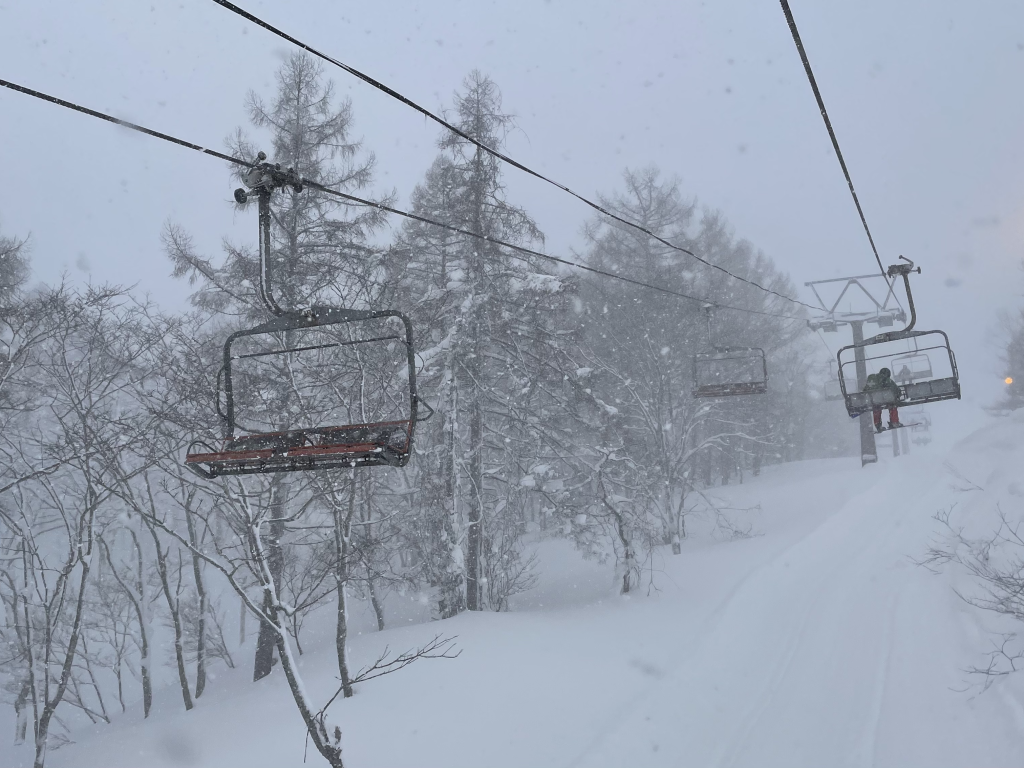In my uni days, I took a course called Japanese Law & Society, of which I remember only that Japanese culture is one of such honesty that children are taught to submit coins they find on the street to the nearest police box.1 Apart from this, a sprinkling of words like kawaii and nori, and a few Miyazaki/Studio Ghibli films, I would rate my knowledge of Japan as well below average.

Still, no-one I know has ever not enjoyed Japan or felt it was overrated. So when R and I decided we were due for an overseas holiday, the timing and the fact that the closest ski resorts during the Australian summer are in Japan made it the obvious destination. (Honestly it seems that 2023 was the year everyone, from my colleagues and extended family to randoms on the internet, was going to Japan.)
Japan did not disappoint. We both had a great time: R on his powder tour, me taking lessons at Akakura Onsen ski resort. In fact, we’ve decided to go again in 2024 – same time, same place.

What was disappointing was that the tight timing of our 2023 flights meant we weren’t able to experience more of the country and culture. We’ve decided to add a few days to our 2024 itinerary in order to include more non-skiing activities.
Still, from just a week landing in Tokyo then taking the train to the little town of Myoko Kogen, there were a handful of cultural aspects that I found curious and worth sharing.
1. Elaborate processes
Even before entering Japan, I got the sense that they go hard on step-by-step instructions. Which ironically complicates things. Despite diagrams to show you how to do everything, I found filling in pre-entry immigration and customs forms, and reserving train tickets, less than straightforward.
2. Elaborate packaging
While glass, aluminium and plastic bottle recycling had separate bins, paper recycling only accepted magazines and newspapers. Everything we bought seemed overpackaged in plastic.
Take, for example, the onigiri triangles sold at any convenience store. I loved them for being cheap and tasty. But the gratuitous plastic sleeving? Then I realised there was a specific reason for all that plastic.

True to Point #1 above, each corner was numbered with an arrow, to indicate the way in which you should unwrap the pack. There was a purpose to the precision: the plastic was not superfluous, but rather served to separate the nori from the rice, thus ensuring you always bit into fresh, crispy seaweed! An everyday, ordinary epiphany.
3. Vending machines in every street
There are vending machines on every street corner in Tokyo, from the multi-lane avenues to the smallest backstreets. They sell cold and hot beverages, including beer and coffee. It really takes convenience to a whole new level.

My biggest discovery was sobacha (soba tea) – caffeine free and deliciously savoury.
4. No-one says konichiwa
I used konichiwa a bunch of times and occasionally the shopkeeper would reciprocate, but I never heard any Japanese person initiate a greeting with this word.
I also spent half the week saying “origato” before I finally realised it was arigato and that people always add gozaimasu to the end, just without pronouncing the u.
5. Hi-tech toilets
I’d heard about Japanese toilets before so I knew they had a bidet function and heated seats. I did not, however, realise that most toilets offer several additional functions. These include adjustable water pressure, a deodoriser and a musical note button labelled “privacy”, which generates a running water sound so you can confidently and discretely do your business.

6. Ski resorts are full of Australians – and cute old Japanese people
I mean it makes sense given Japan’s proximity to Australia. Although Myoko Kogen is not as touristy as Niiseko in Hokkaido, there were plenty of Aussie (and US) expats around. The only English-speaking ski school in town is managed by the same company that offers lessons at Falls Creek in Victoria, Australia.
Meanwhile, Akakura Onsen ski resort itself was full of cute old Japanese men and women armed with bamboo brush brooms, ready to brush the snow off the lift for you. Myoko is a farming region, famous for its rice (which was indeed uniquely tasty), and in the winter – the farming off season – the farmers work the ski lifts.

*
These aspects of Japanese culture were curious to me because they’re different from what I’ve observed in Australia, South America and anywhere else I’ve visited. Some things I found charming; others more confusing.
Apart from being a fan of the powder skiing in Japan, R loves the food, the cleanliness of the country and the politeness/orderliness of the people. This amuses me because it tells you a bit about him as a person. I wonder what what my observations say about me?
- I also remember Professor Kent Anderson’s amazing blended Canadian accent, but that’s neither here nor there. ↩︎







